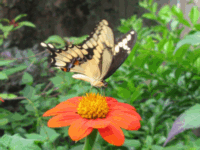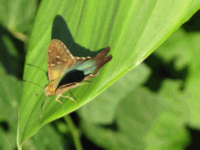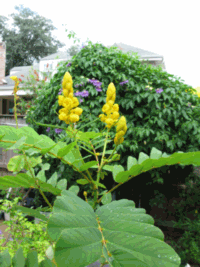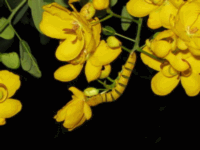
Butterflies are beautiful! They add color and movement to your garden. Because butterflies are cold-blooded, they are not typically active during our winter months, but on warm days and as the weather gets gradually warmer later this month, you will start to see butterflies in and around your garden. How do you attract them? By butterfly gardening!
What is butterfly gardening? Butterfly gardening is providing plants in your garden that are preferred by butterflies. Nectar plants are those with flowers used for feeding. Host plants are used for the eggs and caterpillars (larval stage) . Adult butterflies will often remain near their host plants, if there is also a nectar source. Sometimes, the blooms on host plants may also be used for nectaring. To extend the butterfly season in your garden, choose nectar plants with staggered bloom times.
Butterflies have specific preferences for these host plants. Eastern Black Swallowtail butterflies use members of the carrot family, including parsley and fennel. Long tailed skippers prefer legumes, such as the hyacinth bean vine. Only a few butterflies, including the Gray Hairstreak and Painted Lady, lay eggs on many different plants.

The black and orange Monarch butterfly (Danaus plexippus) is a common visitor to New Orleans gardens. A local master gardener who selects plants to attract monarchs and other butterfly species to her yard recommends including any of the following nectar plants in the landscape: milkweed (varieties of Asclepias), Lantana camara, purple coneflower, buddleia, Amazon dianthus, Mexican flame vine, pentas, bog sage and yellow violas.
Before making an appearance in your garden, the monarch grew from a tiny egg about the size of the head of a pin laid on a milkweed leaf, to a larva feeding on milkweed, to a pupa encased in a chrysalis, finally emerging as an adult butterfly. This life cycle evolves over the course of approximately one month. Most adult monarchs live 4 to 8 weeks with the exception of those who enter diapause (delayed sexual maturity). The latter group are the monarchs that travel distances as long as 3,000 miles to winter in Mexico, returning to the United States in late February and March to begin the life cycle again. You can track the migration on the Journey North website.

The milkweed monarchs ingest as larvae remains in the body of the adult as a poison, providing protection from most natural predators. Birds recognize the black and orange colors of this butterfly, warning them not to try to consume a poisonous insect. The greatest threat to the monarch population in North America is loss of natural habitat. Milkweed, essential food for the pupae, grows wild in rural areas, but is often destroyed by mowing and pesticide application. Open fields are lost due to construction of homes and industrial facilities. Milkweed plants are available for purchase at local nurseries and seeds can easily be harvested from existing plants or purchased for the cost of shipping from a variety of websites (e.g. www.livemonarch.com).
Another common butterfly in our garden and one of the earliest spring butterflies to be seen in the New Orleans area is the Cloudless Giant Sulphur (Phoebis sennae). This large yellow butterfly makes a less dramatic migration than the Monarch, wintering in warmer southern areas and dispersing northward each spring. Host plants for the caterpillars are varieties of Senna (Cassia), including the old New Orleans favorite candelabrum plant and that attractive native plant, the partridge pea (Chamaecrista fasciculata). The black-striped caterpillars are yellow if they eat the yellow flowers and green if they eat the green leaves. This coloration and their shape provide successful camouflage from predators. The Cloudless Sulphur butterfly feeds by nectaring on diverse flowering plants and makes extensive use of red flowers. he proboscis, or tongue-like feeding tube, is long enough to utilize more tubular flowers than many other butterflies. So provide Cassia plants and nectar producing flowers to attract this butterfly to your garden now.

The beauty of butterfly gardening is not just visual, it is ecologically beneficial. Pesticides are not used because, yes, butterflies are insects. Much habitat has been lost due to changes in the environment, caused by humans, for example, construction and chemicals. Butterfly gardeners try to ameliorate these changes by giving butterflies a home and themselves a more lovely garden. As gardeners, you have the opportunity to create small-scale habitats for monarchs and the many other butterflies that live in our part of the country. A wonderful publication “Butterfly Gardening for Louisianians” can be downloaded from the LSU AgCenter’s website. Start your Butterfly garden now by planning for both larval host plants and nectar plants in your garden this spring.
submitted by Karen Pinsky and Kathy McCrocklin
Photos by Tammany Baumgarten
